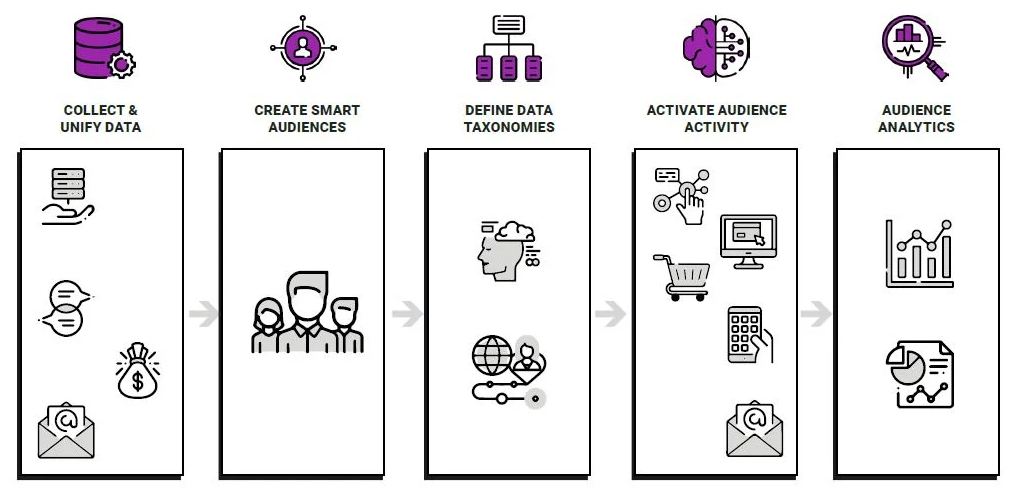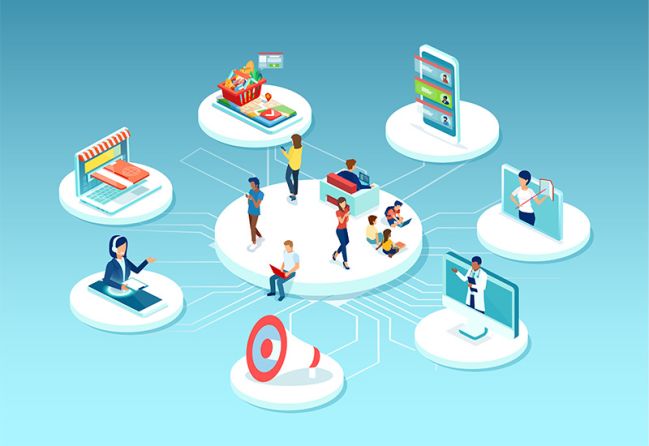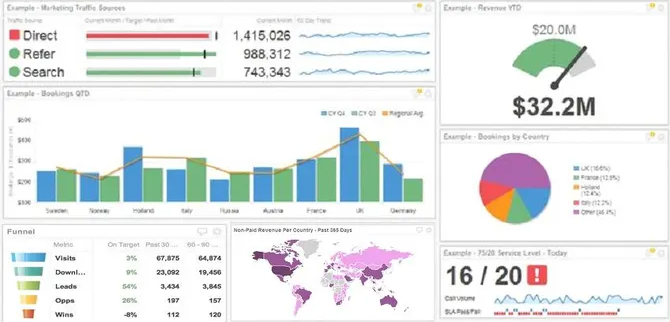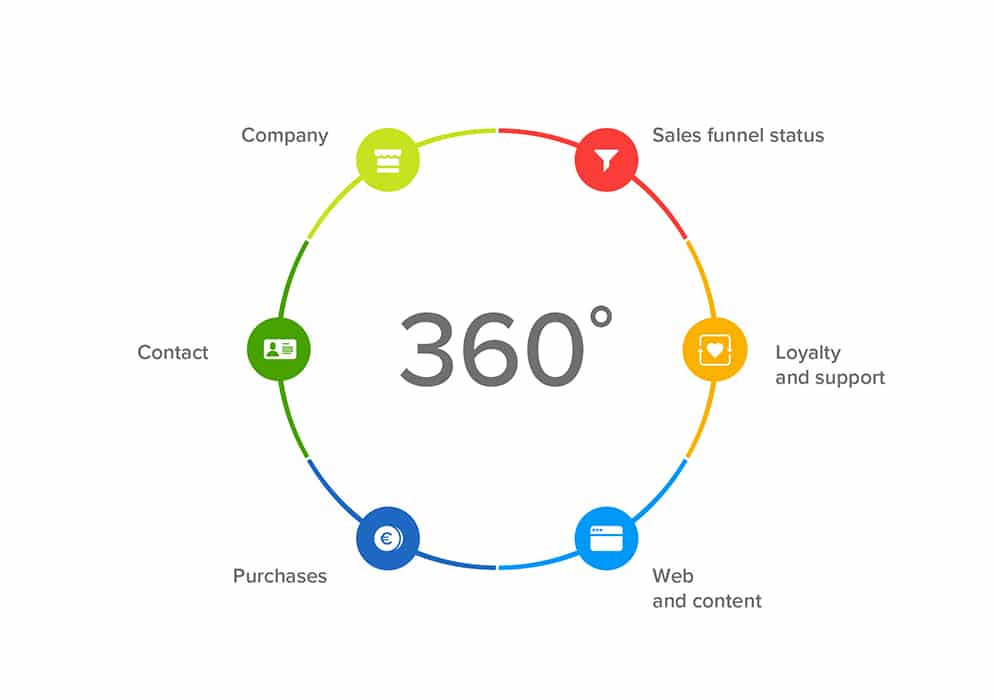In an era where data reigns, the ability to navigate and utilize this valuable resource could very well be the differentiator that propels an eCommerce brand ahead in the competitive arena. According to a study by Invesp 56% of e-consumers are more likely to return to a site that delivers personalized product recommendations. This dramatic ROI expectation underscores the power of CDPs to transform customer data into actionable insights. This blog post delves into the essentials of Customer Data Platforms, guiding e-commerce executives in selecting the perfect CDP tailored to their unique needs.
Choosing a customer data platform: The different types of CDP
Before choosing a CDP, it helps to know what types are available and what they do. The most common types of customer data platforms include:
- Data consolidation and unification CDPs: a simple platform that unifies and categorizes data from multiple sources.
- Identity and engagement CDPs: platforms that unify and categorize data while using artificial intelligence to de-dupe data and create more accurate customer profiles. They also identify customer behaviors and trends.
- Automated analytics CDPs: Automate the process of analyzing customer data to create accurate profiles from large data sets.
- Automated actions CDPs: Automate data collection, categorization, analysis, and data-driven actions. This advanced technology can automatically execute marketing campaigns based on customer profiles and other data.
CDPs vary in terms of functionality and complexity. If you’re new to CDP, you may want to get your feet wet with a simple data consolidation CDP. If you’re tech-savvy, choose a customer data platform with advanced features that you can grow into.
12 essential steps to choosing a customer data platform
Follow these steps to find the right CDP for your business.
Step 1: Identify your business needs
The first step in choosing a customer data platform is to identify why you need it and how you intend to use it. Determine what you want to achieve with your CDP, whether it’s improved customer insights or better data management. Unless you’re a solo business owner, involve a team to better understand what you need and how you will use the CDP.
- Assemble a panel of internal stakeholders from each department, such as sales, marketing, customer relationship management, IT, and product development.
- Ask each panelist to identify their top data challenges and potential use cases for the CDP.
- Create a list of technology you’ll need to access and manage the CDP
- Make a list of all current customer relationship management (CRM) and other databases in which you store information so you can look for integrations.
Each member of your stakeholder panel will have different priorities for your CDP. Your sales team may want to better manage pipelines and strengthen customer relationships, while marketers may be more interested in having an accurate picture of the customer journey. Work together to find out which needs are most pressing.
Estimated time needed: 3 weeks of prep and a minimum of one meeting
Step 2: Understand the different types of CDPs

Once you’ve prioritized your business needs, you’ll know what features and functionalities you want in your CDP. Choose a customer data platform that can coordinate and analyze data in a way that accommodates the needs of your company. Look for a platform that can work with the proper types of data for your needs, such as:
- Behavioral data to map the customer journey and analyze how customers interact with your business
- Transactional data from previous customers
- Demographic data as it exists in your system
- Marketing campaign data and key performance indicators to help measure campaign success rates
Next, consider which capabilities you’ll need from a platform, such as:
- Collecting first-party data from multiple online and offline channels
- Unifying data to create single customer views
- Segmenting audiences to allow for better personalization
- Automated campaign activation and execution
Estimated Time Needed: Between 8 and 12 work hours
Step 3: Conduct research for eCommerce-focused CDP solutions

More than half of customers expect personalization from retailers when they spend more with a company. Nearly two-thirds of them expect more personalization when they provide more data to the company. Choosing a CDP designed for eCommerce gives you the information you need to meet customer expectations. An eCommerce-focused solution will consider unique data sources such as loyalty programs and previous transactions. They also allow you to tackle different issues in eCommerce, including:
- Protecting data privacy
- Improving omnichannel engagement
- Customizing customer experiences without making them feel watched
- Converting offline customers into online shoppers
To get started:
- Do a quick internet search such as “top CDP platforms”
- Narrow down the results by searching the site for e-commerce or retail
- Review the lists of features and capabilities
- Start making your short list of CDP platforms
Estimated Time Needed: 4-8 work hours
Step 4: Consider features beyond marketing and customer data

Your CDP can do more for you than synthesizing marketing data. Choose a customer data platform (CDP) that offers retail-specific insights on inventory, customer preferences, market trends, and forecasts.
Find a CDP that accesses market reports and integrates them with your omnichannel inventory management system to perfect your retail operations. Customized reporting and customer behavior predictions can help you refine how you stock each store and reduce the inventory stored in your warehouse. With predictive analytics, you can:
- Reduce your rate of costly stock-outs
- Stop wasting money storing excessive backstock
- Better meet customer needs and expectations for seasonal items
You can also use your CDP to test the waters on customer loyalty programs and dynamic pricing strategies. Looking at customer feedback and analyzing it in context with historical data helps you better understand how price increases, sales, and other business decisions will impact their desire to shop with you. You might find new insights on how you can reward loyal customers and increase their lifetime value just by looking at market trends and social media comments.
Tip: You can read our detailed guide for advanced CDP strategies here.
Estimated Time Needed: 4-8 work hours
Step 5: Read customer reviews per potential platform

Resist the temptation to choose a customer data platform that only offers all your desired features. Instead, take some time to read customer reviews of each platform. Carefully read each review to decide if it is helpful or if someone had an unpleasant experience. Look for reviews that:
- Offer useful and constructive feedback
- Outline the benefits and drawbacks of specific features
- Are civil and friendly rather than overly personal
- Are relevant to the data you need to evaluate each platform
You can look at sites such as G2, Capterra, and Gartner to choose a customer data platform with the best ratings and features according to your needs. These sites offer average ratings, costs, and other information for a side-by-side comparison. When reading reviews, consider:
- Customer support
- Customer onboarding
- Ease of use
- Functionality
Choose a customer data platform that makes the onboarding process easy and offers you a customer service contact for questions as they arise. You don’t want a company that leaves you high and dry when the system stops working.
Estimated Time Needed: 4-8 work hours

Step 6: Compare the UI and how user-friendly it is

Choose a customer data platform with a clean user interface that is easy to navigate. Your sales and marketing team will use this platform for multiple functions. They need to be able to figure out how to upload and analyze data. Look for a user interface with these features:
- Intuitive design: Users should be able to learn the software easily.
- Consistency: Each part of the CDP should have the same design and functionality.
- Simplicity: The UI should not be too complicated.
- Navigation: Users should be able to find fields and other features easily.
Start by looking through customer reviews regarding the user interface and note any negative comments. Look for images of the platform online and compare various user interfaces to see which one works best for you. Before committing to a specific CDP, look for companies that offer a demo or look for a demo video on the company’s website or social media. Choose a customer data platform with an interface that is easy for multiple users. Most of your sales and marketing team will likely end up using the platform, so get a list of desired features and use it to assess each UI.
Estimated Time Needed: 12-24 work hours (potentially more if you schedule multiple demos)
Step 7: Gather data on security features

Data privacy is a big concern for a majority of customers. Your CDP allows you to use their data to make the shopping experience more customized to their needs, but you also need to protect their information.
- Compare security features for each CDP
- Choose a customer data platform with built-in security, such as user control, redundancies, cloud-based storage, and more
- Search the internet for information on security breaches and how the company would handle them
Step 8: Compare every platform’s reporting capabilities

Gathering valuable insights from existing data is the main function of your CDP as a retailer. But data means nothing if you don’t have time to analyze it. When choosing a customer data platform, consider what kind of data you’re interested in and look at the platform’s reporting capabilities.
Choose a customer data platform that offers data visualizations, analytics, and other features that save you from wading through pages of data. Various CDP platforms offer:
- Marketing and campaign analytics
- Detailed customer profiles
- Customer behavior analysis
- Multivariate A/B testing for marketing campaigns
Look for a tool that makes it easy to see important analytics and insights. Some CDPs offer customizable dashboards that let you determine which analytics and insights are most important so you can display them on your home page. Some offer full maps of the customer journey for your marketing team, while others display customer demographics and other segmentation data upfront. Choose the option that’s best for your goals.
Estimated Time Needed: 4-8 work hours
Step 9: Do not underestimate customization features

There are plenty of CDP options on the market that allow you to customize the system based on your specific goals and data needs. Every CDP offers:
- Data capture
- Data storage, modeling, and categorization
- Data structuring and sharing with other tools
Choose a customer data platform with a high level of customization so you’re not limited on what types of data you can synthesize and analyze. If you’re only using a marketing data platform, for example, you may not be able to automate campaigns based on your business goals. By choosing a customer data platform that is customizable, you can scale the tool with your business as it grows and your needs evolve.
Step 10: Look for a 360 approach for genuinely unified data

A CDP gives you a 360-degree view of your customer. Choose a CDP that compiles and analyzes data from each touchpoint of omnichannel engagement to see a full view of your customer’s journey and use the data to personalize marketing and customer service at each step. By choosing a customer data platform that identifies duplicate data, you can see who is interacting with your company in multiple locations. These tools let you see:
- Who is engaging with you through multiple touchpoints
- What touchpoints are resulting in a conversion
- How happy a customer is after they’ve shopped with you
- Detailed customer needs
With this data, you can create more effective, personalized marketing campaigns designed to push customers through your pipeline. You can effectively assess customer needs to perfect your products and service offerings. Choose a customer data platform that gives you these 360-degree views for a clearer picture of each customer in your system, and use the information to better meet their needs.
Step 11: Take advantage of free trials
Some basic CDP providers offer a free trial of their software. If you’re interested in getting your feet wet, opt for the free trial to learn more about how to upload and analyze data. You will learn more about what you need in a user interface and the types of reports you need. After using a trial, you might find that the platform doesn’t offer robust reporting. Use this information to refine your shortlist.
Step 12: Consider pricing

We all want to pay top dollar for a solution that will help us consistently meet and exceed our goals. But the reality is that you’re likely limited to a certain budget range. Before signing a contract with a CDP provider, make sure you’re choosing a customer data platform that meets your functionality needs at a price you can afford.
- Look at the pricing structure to see if it’s a subscription fee or a fixed price for the platform
- Consider how many users will be on the platform and see if the subscription price goes up for multiple users
- Evaluate the technology needed to run each CDP and determine if you need to upgrade any of your existing equipment
- Look at how each CDP integrates with your existing CRM software to see if you need to pay for any additional programs.
Tip: You can read how a CDP is different from a CRM here
5 Reasons why Contact Pigeon’s CDP is an ideal choice for retailers
Instead of spending a ton of time researching various CDPs, choose a customer data platform specifically designed to help retailers and eCommerce professionals successfully reach their goals. Consider these reasons why ContactPigeon is the best platform for you.
- G2 placed ContactPigeon among the 5 top-rated solutions in Europe: Considering user feedback and satisfaction ratings, G2 determined that ContactPigeon’s CDP is among the best.
- Unified data across multiple channels: ContactPigeon integrates with popular CRM software and other platforms. It also lets you manually enter your customer data for a 360-degree view.
- Assigned customer success manager and omnichannel expert at your service: Stick with the CDP provider who understands omnichannel retail and knows what data you need to delight your customers.
- Trusted by renowned retailers: Some of the world’s most well-known retailers including Sephora, Tommy Hilfiger, and Hertz use ContactPigeon to engage customers across marketing channels.
- Advanced insights about your customers: With ContactPigeon, you can see how customers are responding to your messages across each marketing channel, allowing you to tweak your messaging for greater success.
Learn more about how ContactPigeon can take your marketing efforts to the next level. Schedule a free demo today.
It’s all about data-driven decision-making, especially when choosing a CDP
In conclusion, the journey towards a well-informed decision regarding choosing the ideal retail CDP for venture, involves careful consideration of unique business requirements, scalability, and the potential for fostering lasting connections with consumers. As customer expectations continue to rise, embracing the right customer engagement platform can serve as a beacon for businesses, guiding them toward success in the interconnected and customer-centric landscape of omnichannel retail. Do not rush, this is a tough decision that could take months to be taken. Conduct your marketing research, collect feedback and financial offers, schedule demos, and of course, “trust your gut”.

Let’s Help You Scale Up





